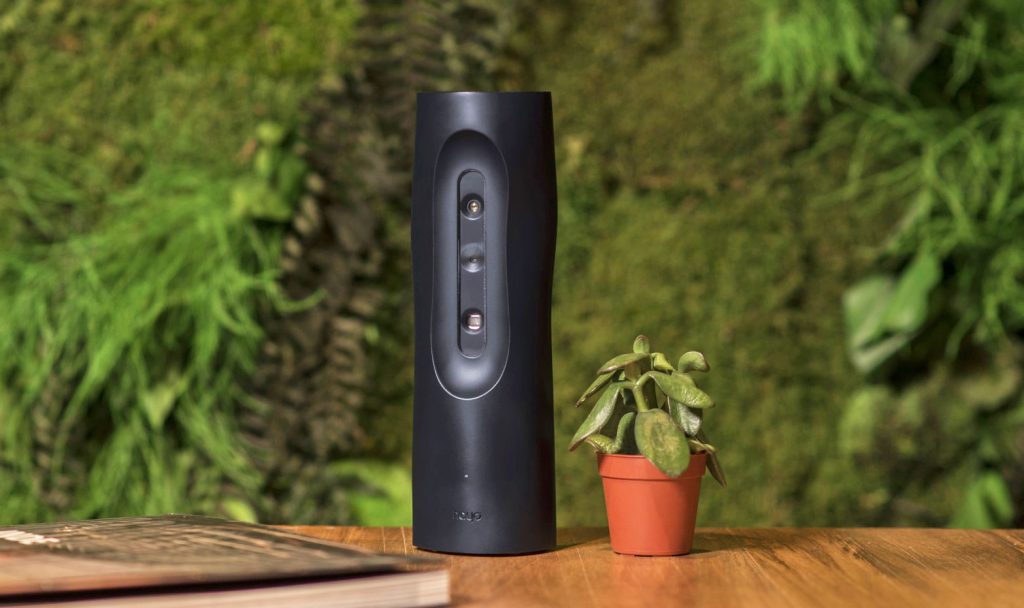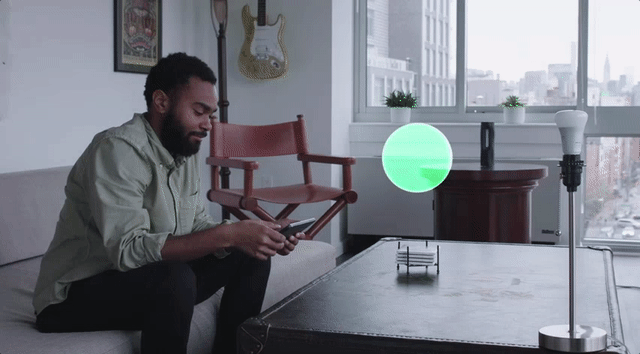If you haven’t lived under a rock for the past year, you know that physical virtual assistants like Amazon Echo and Google Home are here to make our homes smarter and our lives easier. At least that is their goal. But while both devices use a different platform, they have one big thing in common: they both assume we want to control our homes using voice commands.
I’ve always found voice control awkward — both on my phone, in my car, everywhere. Maybe I need to get used to it, or maybe it’s simply not for everyone, or everything you want to control. That’s why I’m glad that there are companies out there trying to compete with Amazon and Google by being innovative.

Hayo is an upcoming device that just went past its $80,000 crowdfunding goal on Indigogo. It’s a virtual assistant that you put in your living room, or multiple ones in multiple rooms. It’s about the same size as the tall Echo (22 cm). But instead of using your voice — it doesn’t even have a microphone — you can give it commands using gestures. And not just the kind of mid-air gestures you can give to some smart TVs, you can also turn any object or surface in your room into a button to activate other connected devices and services.
The core of this technology is an infrared depth sensor — much like the Structure Sensor or Intel RealSense-based 3D scanners I reviewed — to make a 3D scan of your room.

After this, it’s spatially aware of the furniture and other surfaces in your room. Hayo is connected through WiFi and a dedicated app let’s you place hotspots on any surface or in mid-air.

The hotspot can then be used to set gestures that control online services and a growing number of connected devices, like Sonos speakers, Hue lights or your Nest thermostat. It currently supports everything that can be connected through Wink, IFTTT or Logitech Harmony.

So basically, you can control your Chromecast as if you’re Luke Skywalker…

For starters, using The Force to control your home will impress everyone. But if you think about it can actually be really useful and subtile — as long as you remember where the hotspots are because placing stickers in your room would really defeat the purpose.
It uses infrared light so it will also work in the dark. It uses cloud processing for advanced motion analysis and has an automatic repositioning feature that remembers your room even if you move the Hayo. It has a large field of view — 60° (vertical) x 49.5° (horizontal) with a maximum sensing distance of 6 meters — to cover a good part of your room.
But let’s be honest, unlike Google Home and Amazon Echo, you will probably put the Hayo against a wall, probably high and in a corner for maximum range — it will not work if you put it on a side table facing away from you (sorry dude).

That picture does raise an important question, though: What about privacy? Well that’s actually the first thing the feature graphic covers:

But the first point doesn’t really make sense to me (no pun intended). As you might know depth sensors feature an infrared camera to detect patterns projected by an infrared laser. If you look at the sensor array, you see three holes. The bottom one is the projector and I’m pretty sure the top one is a wide-angle infrared camera (even though the graphic claims it has no “video” camera).
So what about the one in the center? I’m not sure which sensor array is inside the Hayo, but both RealSense and PrimeSense arrays have an color camera in the middle…
Luckily, a comment on the Indiegogo page clarifies the privacy concerns:
“The only things stored in the cloud are your configurations and your Hayo’s informations and status. The sensor does not record. The data containing the scan of your room stay on the device.”
So that’s that. And let’s be honest: you probably have a webcam potentially looking at you all the time. I even have a RealSense SR300 pointed at me while I work to unlock my PC through Windows Hello so I can’t be too big of a critic on this subject.
Which leaves me with the question: do I want one? It will cost $299 when it supposedly comes out in September but you can pre-order it on Indiegogo for $219. Google Home is $129, the tall Amazon Echo costs $179,99 and the smaller Echo Dot costs just $49,99.
But I like the idea of using The Force better than talking to droids.
For me it depends on how well it works in practice. In my studio, I’m surrounded by depth sensors. Not only those that can be used for 3D scanning, but I also have a HTC Vive and a Oculus Rift VR headset that use infrared sensors track movements. And I know for a fact that having two sensors pointing at me from opposing angles help a lot with tracking motion, because it minimizes the effects of occlusion. This means it can still track me if something or someone temporarily blocks the view of one of the sensors.
But I feel my studio needs a Hayo… Maybe I should request a review unit!





Your article helped me a lot, is there any more related content? Thanks!